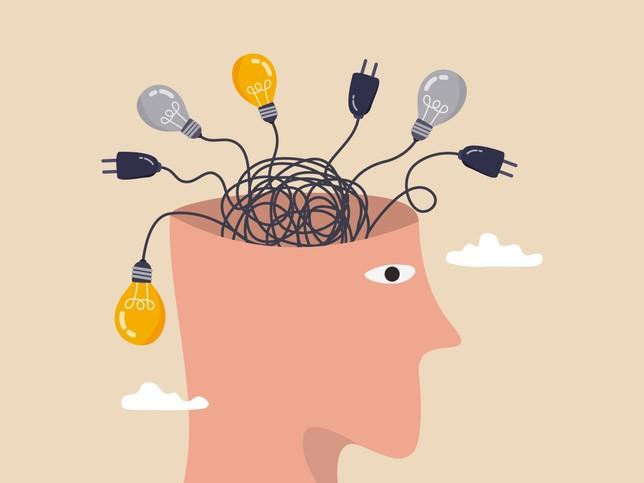
Confusion diffusion: nine ways to prepare students to work with uncertainty

You may have heard the term “VUCA environment” – one that is volatile, uncertain, complex and ambiguous – recently. The acronym has its roots in military discourse but is increasingly relevant to our day-to-day lives. From global climate change and the pandemic to Brexit and war in Europe, we are exposed to a seemingly endless ticker tape of uncertainty.
This provokes a question for the higher education sector: how do we prepare our graduates for this volatile world? While HE institutions have good experience of preparing students for unpredictable futures – we design curricula for students we haven’t met and jobs that haven’t been invented yet – a specific focus on training for uncertainty may be needed.
Managing uncertainty is already a hot topic for medical education, where a recent surge of research interest has identified key issues. Studies suggest that a health professional’s ability to manage uncertainty can impact on their communication, decision-making and emotion-regulation skills, as well as patient outcomes, while others highlight that a positive approach to uncertainty can protect against poor well-being or burnout.
- Spotlight guide: Catching students before they fall
- What I learned from spending three years researching TikTok
- A little more conversation: using Elvis to teach critical theory
A focus on uncertainty becomes more urgent when we consider that established approaches to higher education may block or hinder skills development in this domain. Delese Wear, from Northeast Ohio Medical University, warns that strategies which aim to improve the educational experience (for example, increased digitisation, constructive alignment and competency-based assessment) may have the unintended effect of reducing students’ opportunities to engage with “nuance, context and ambiguity”.
Researchers believe that a lack of certainty is an important catalyst for learning and can lead to improved long-term retention and a deeper understanding of material. We are now gaining more insight into how emotions can trigger and maintain the cognitive-processing mechanisms underlying learning and performance. Although the literature here is nuanced, it is thought that experiences of confusion (the right amount at the right time) can keep students engaged with a topic or challenge, enhancing long-term retention and increasing transferable understanding of the material. This implies that our students appear to benefit from being exposed to uncertainty, even if they prefer not to be.
Luckily, higher education institutions – complex and often imperfect ecosystems – provide a natural sandbox for learning about uncertainty. Thoughtful instructional design can help us to harness this environment and help our students to build the skills – problem-solving, critical thinking, coping with failure – needed to meet the demands of a VUCA world. Such approaches may also offer protection against career disillusionment and burnout.
Here are nine instructional design strategies to try in your own teaching context:
- Make the invisible visible: Uncertainty is ever present but, like the Magic Eye pictures of the 1990s, we won’t notice if we don’t stop to look. Use your teaching to open the conversation with your students, and help them to tune in, too. Ask questions such as: “What do we not know here?” or “What’s missing from this picture?” This helps send a message that uncertainty is all around, but that’s OK.
- Actively elicit student uncertainties: Clinical educators use a debriefing tool called SNAPPS to help students disclose aspects of a patient’s case that they are not sure about. You can also use a “muddiest point” exercise. Here, you ask the class: “What was the most confusing or least clear concept in today’s class?” before gathering responses verbally, or via pieces of paper or online forms. Eliciting our students’ uncertainties helps them find their voice and offers us clear feedback on what concepts we need to revisit.
- Make it safe for your learners to disclose uncertainty: When we probe our students’ uncertainties, we are also responsible for making this a safe thing to do. Most people have a fear of “looking stupid”. When our students express doubt or confusion, we need to respond with empathy and sensitive communication. If students feel afraid to disclose uncertainty, it’s harder for educators to detect and correct misconceptions.
- Add learning activities that provoke uncertainty: Puzzles, games, role plays, maker spaces and group activities such as problem-based learning all offer opportunities for learning around uncertainty. It helps to explain to students why you are using these strategies and how “productive struggle” may result in long-term learning gains. Preferably these activities should be low stakes for students, that is, they are not linked to substantial grading decisions.
- Use shared reflection to help students unpack uncertainty: We talk about uncertainty as if it’s simple, but real-world examples tend to be multifaceted with multiple antecedents and consequences. Shared reflection and peer-to-peer learning offer valuable ways to help students see this granularity.
- Encourage students to persist despite uncertainty: Educators can positively influence student engagement through validating (“I know you are finding this one a bit of a struggle”) or normalising (“Most people find this concept hard to crack”) their experiences. Empathising, and keeping students hopeful that they will succeed, can boost motivation through challenging topics.
- Highlight the value of working with uncertainty: While uncertainty can feel aversive or anxiety-laden, it is in itself a neutral phenomenon; unpredictable situations can lead to positive change as well as negative. Students can be helped to apply different cognitive frames to uncertain situations. By seeking to convert students’ anxiety into curiosity or excitement, we can help them to recognise and harness the opportunities that often emerge through upheaval and disruption.
- In designing course elements, use a lens of uncertainty: It can be helpful to reflect on which aspects of a module or course might trigger experiences of uncertainty for students. Ronald Beghetto, of Arizona State University, says that “good uncertainty…provides students opportunities to engage with the unknowns of a challenge in an otherwise supportive, well-structured environment”. Try to maximise such “good” uncertainty (mixing up students’ friendship groups for a project, engaging them in workplace-based learning or meeting people from different cultures and backgrounds) that can lead to meaningful learning experiences and minimise “bad” uncertainty (inaccurate class schedules, unclear assignment guidelines) that may lead to frustration.
- Take time to reflect on your own response to uncertainty: Think about how you view and act upon complexity and unpredictability in your own life. What aspects of your responses are constructive, and what might need further work? Students often role-model from what we do rather than what we say, so it’s good to know the message we send out. It’s also helpful to share that uncertainty is a work-in-progress for us, too: “This is a concept I struggle with myself…” or “I’m having trouble getting this clear in my head.”
Jenny Moffett is a health professions’ educationalist and faculty developer based at RCSI University of Medicine and Health Sciences in Dublin, Ireland.
If you would like advice and insight from academics and university staff delivered direct to your inbox each week, sign up for the Campus newsletter.


